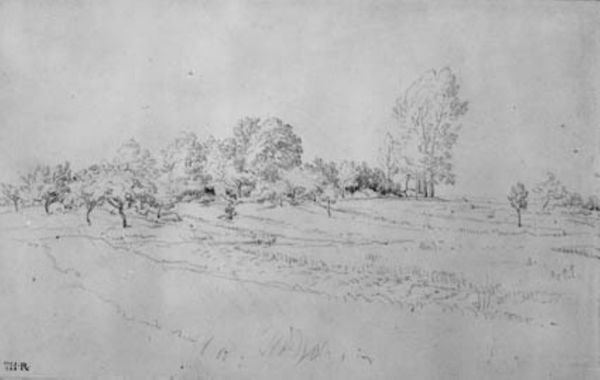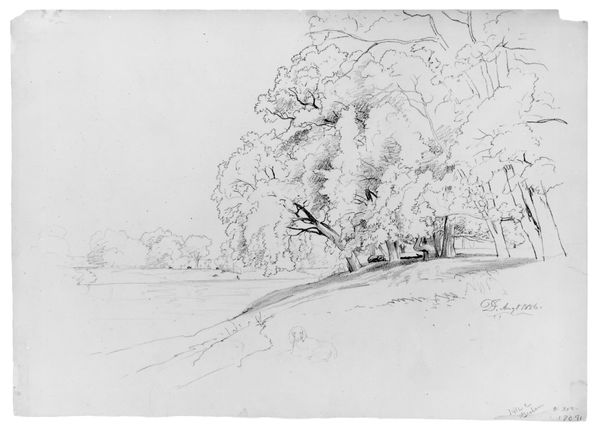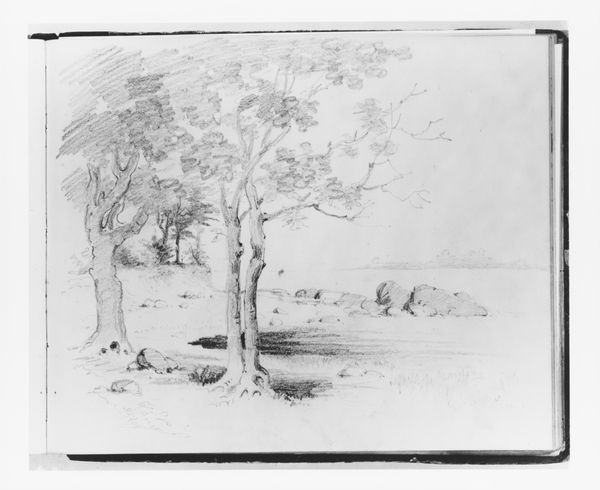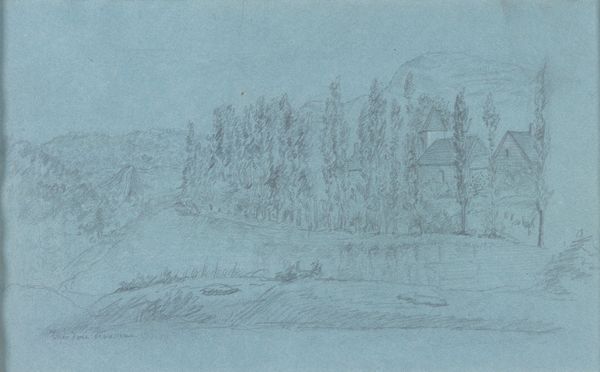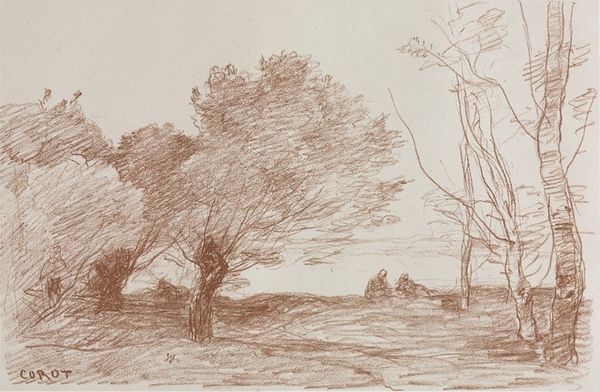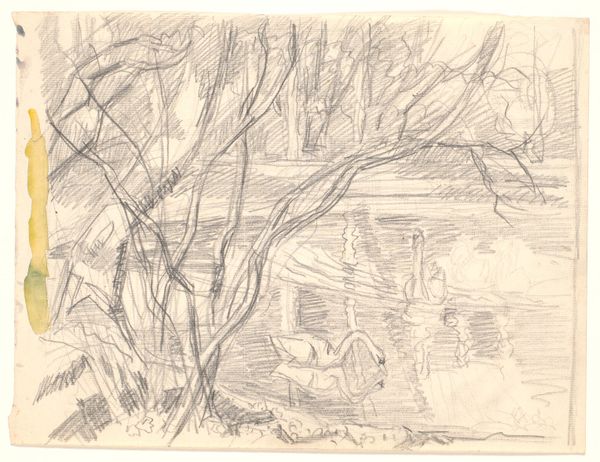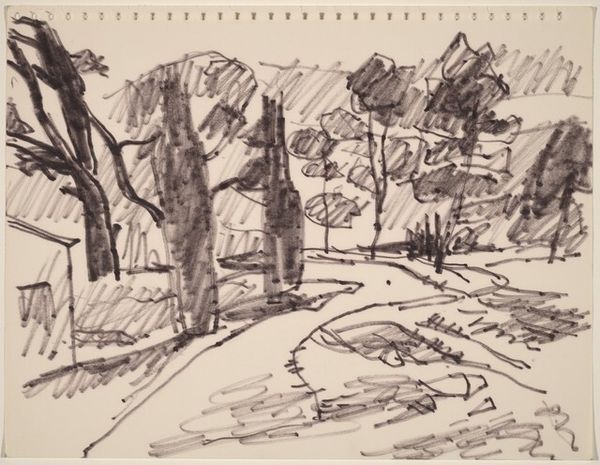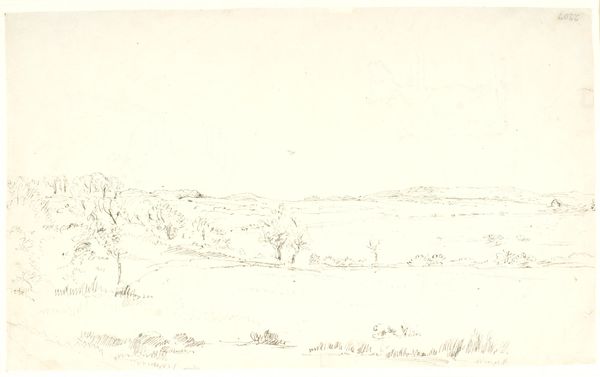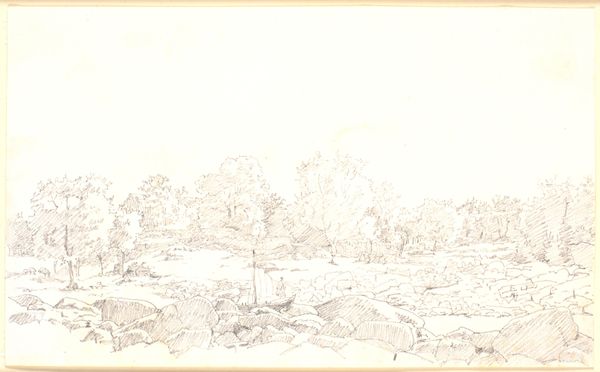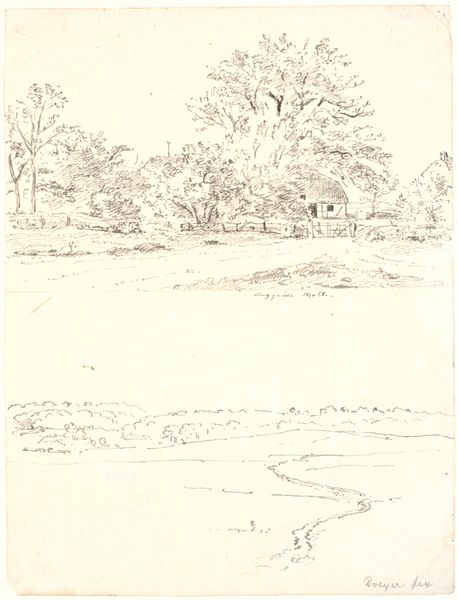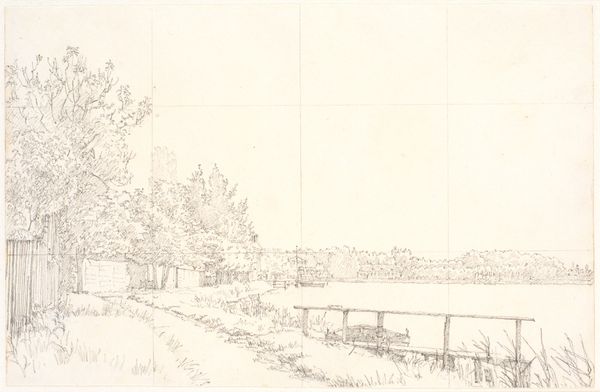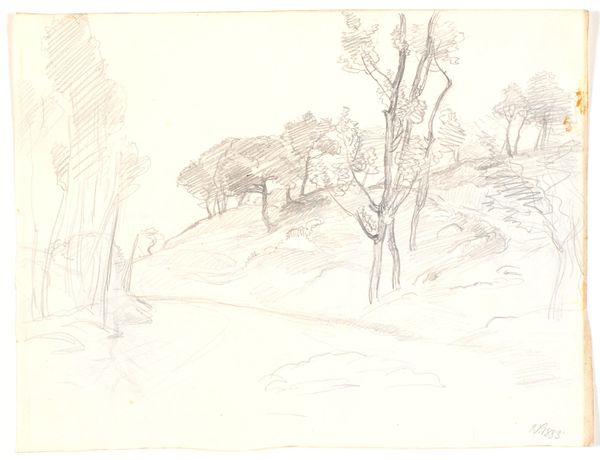
drawing, pencil
#
drawing
#
pencil sketch
#
landscape
#
charcoal drawing
#
pencil drawing
#
pencil
Dimensions: 93 mm (height) x 146 mm (width) (bladmaal)
Editor: So here we have Pierre Andrieu's "Vej ved en skovs\u00f8," created sometime between 1821 and 1892. It's a pencil drawing, and what strikes me most is the bareness of the landscape. There’s a certain starkness, an almost utilitarian feel to it. What catches your eye? Curator: It’s precisely that utilitarian feel that’s compelling. Think about the ready availability of graphite and paper and how that impacts drawing as a portable means for production. Andrieu's rapid pencil strokes could represent preliminary site documentation for future works of art and construction. Note how he sketches the curve of the path in a way that it implies use, circulation. What might influence this production? Was he using accessible and economic material? Was his labor efficient? Editor: That's a great point. It’s not just about *what* is depicted, but *how* it’s depicted given available material. Could the sketch serve as a preliminary study or preparation for something grander, like an oil painting? Was the value determined by the sketch’s place within a sequence of manufacture? Curator: Exactly! We often overlook the social implications of seemingly simple materials like pencil and paper. They democratized art-making to some extent, allowing for widespread participation in image production. Moreover, analyzing the source and accessibility of pencils in the 19th century provides an interesting view of the historical value of materiality, manufacturing, labor and consumption. This challenges a romantic view of landscape drawing. Editor: So, looking at it through a materialist lens gives the sketch weight that goes beyond simply being a landscape study. Curator: Precisely. By emphasizing the material processes, and its availability we’ve discovered some clues about art making practices in that historical period. Editor: This changes how I think of art. Looking at process over subject—I learned so much! Curator: Me too.
Comments
No comments
Be the first to comment and join the conversation on the ultimate creative platform.
